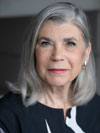Some fascinating contrasts are revealed in the latest report about women in the boardroom. Ten years on from the first Cranfield Female FTSE Report, the number of directorships held by women on FTSE 100 corporate boards has risen by only five percentage points, from 7% in 1999 to 12% this year.
But there is good news too, and some intriguing findings for women working in the non-traditional workplace. Whilst 22 companies in the index have no women at all on their boards, some of the others who do, want more of them. Report co-author Ruth Sealey comments, “In comparison to the 1999 figures, the most significant increase is in the number of companies with multiple women on their boards – 39 of the FTSE 100.”
She continues, “It is only once a critical mass of women in the boardroom is attained that real culture change can occur.”
That’s fine and dandy, but the critical mass argument doesn’t seem to be working down the pipeline. Despite women achieving 50% (or more) representation in medicine, law and accountancy, the cry goes up regularly that there are far too few at the top of their profession.
What’s more, according to the Cranfield report, some companies working in industries with relatively few women in the workforce have a higher number of women on their boards than those with lots. Surprisingly, it is the oil, gas, mining and electricity industries that have more women in their top executive posts than sectors like retail. So where are we now on the critical mass versus leaky pipeline argument?
It is often put forward that the reason there are so few women at the top is because they don’t want to rise into the heady and ruthless stratosphere of the corporate world and the ranks of the great and good. They are lost through that leaky pipeline, choosing to re-train or change career direction, often setting up their own business.
But I can throw another surprise into the mix. Preparing a speech for the launch of a new satellite branch of the dynamic network Women in Property, I found an interesting common denominator amongst the women breaking down the bastions at the top of very traditional, professional institutions. They have all chosen to paddle their own canoes, running successful businesses, bringing up families and yet keeping on the radar screen for advancement.
They are: President of the Institution of Civil Engineers (Dr Jean Venables OBE), past President of the Institution of Mechnical Engineers (Pam Liversidge OBE), President of the Royal Town Planning (Janet O’Neill) and President-Elect of the Royal Institute of British Architects (Ruth Reed).
Views are invited on how women reach the top – and what companies should do about it.
Subscribe to:
Post Comments (Atom)




No comments:
Post a Comment